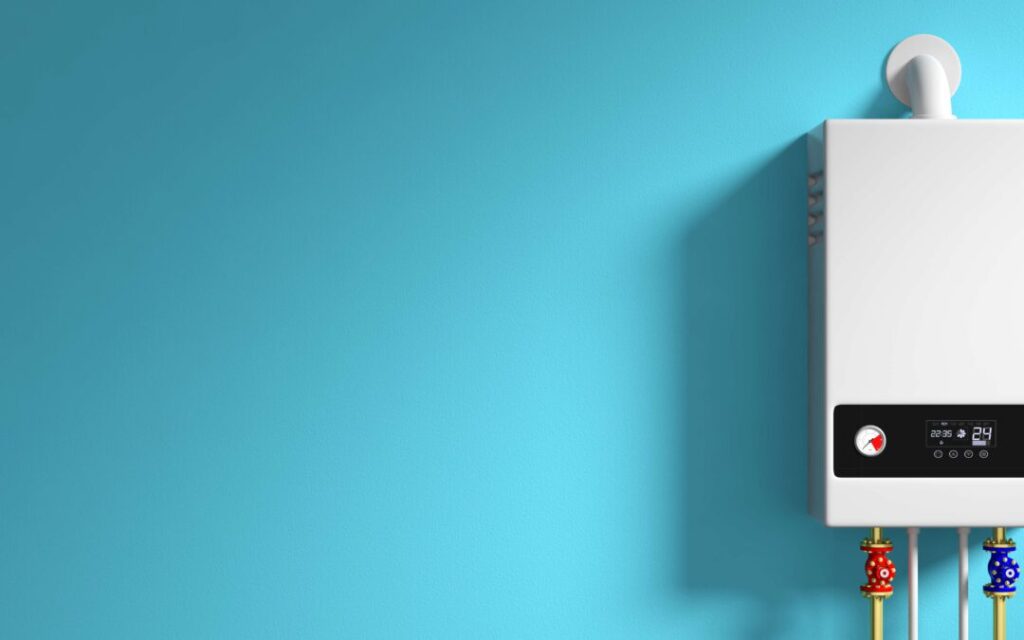Troubleshooting and Repairing Your Water Heater

Water heaters are expensive, but they’re also an integral part of pretty much every family’s daily life. Whether it’s running the dishwasher or washing machine, or simply taking a hot shower, water heaters play a large role in keeping everybody comfortable. When there’s no hot water, it’s an enormous inconvenience. Because it’s not an appliance everyone is familiar with, sometimes repairs can get confusing.
However, there are a number of simple things that can be done before calling in a professional, and NOW Heating & Air is here to provide some insight on things you can do to try and repair the problem yourself. Here are a few simple steps to try and figure out a few common issues with water heaters:
Check Power Sources
If you’re not getting any hot water anywhere in the house, something is amiss. The first thing to check is the thermostat on the water heater itself, making sure it’s set properly. Try and operate the water heater between 120 and 140 degrees to stay comfortable and prevent bacteria from growing.
If your water heater is gas-powered, make sure the pilot light is still lit. Relighting instructions should be detailed on a sticker on your unit. If the pilot light isn’t burning blue, there might be an issue with the gas-to-air ratio. If the pilot light won’t rekindle, it’s likely an issue with a faulty thermocouple. If you’re unsure or uncomfortable working on these things, call a professional for advice or help.
If your water heater runs off electricity, it’s time to cycle the power on the unit by turning it off for a minute or two before turning it back on again. But be careful to make sure you don’t do any work on the water heater until it is turned off. If power cycling it doesn’t work, reset the circuit breaker. If it’s not quite in the “on” position, switch it off, wait for a minute, and then turn it back on. Again, if you’re working with aspects of the water heater you’re unfamiliar with, call a professional.
Inspect for Leaks
If there are visible puddles or other moisture around the unit, it can signal that the tank is leaking. Leaks can occur around the fittings and connections, too, and any leak can keep the water inside the tank from getting to the proper temperature. Leaks need to be addressed as soon as possible because they can get worse over time – and that can cause even more issues.
When the tank is leaking, it might be time for a replacement unit. The connectors are another story. They are often easily replaced, and can extend the life of the unit. But that is a signal that regular maintenance might be necessary to make sure things are working properly. If you can’t identify where the leak is coming from, it’s time to call a professional.
Flush the Tank
It Is not uncommon for minerals and other sediment to cause some build up in the bottom of the tank. That can damage some components and cause problems with the heating element. Flushing your system should be done annually, and can make sure all the lines are clear to keep your unit running at optimal efficiency.
To flush your tank, first you need to make sure you have turned off the electricity or gas, depending on your unit, as well as turning off the water supply. Wait for the water inside the tank to cool down. This is important, because the hot water inside the tank can cause serious injury. This can take some time, so think of allowing the tank to cool overnight.
Once the water is cool, hook up a hose to the drain valve at the bottom of your water heater, and drain it toward the floor drain. Also, if you turn on the hot water at the nearest faucet, it will relieve pressure in the system and help it drain better. Once you have the hose hooked up, open the drain valve and let the water flow from the tank through the hose. After it’s drained, turn the water back on and let the water flow through the tank – flushing any built up sediment from the tank. Once the water’s running clear, turn off the water, remove the hose and close the valve. Refill the tank and turn the water back on, and the system should return to normal.
To keep these situations at bay, it’s important to have regular maintenance on your unit. Regular inspections by a professional can help identify things that might be wearing out, or issues that are developing. While some repairs can be done after a quick trip to the hardware store, not everything is a do-it-yourself project. For more information on how to troubleshoot and repair your water heater, contact Denver’s experts on water heaters at NOW Heating & Air.
Now Heating & Air
8661 Rosemary St
Commerce City, CO 80022
Phone 303-287-8000
